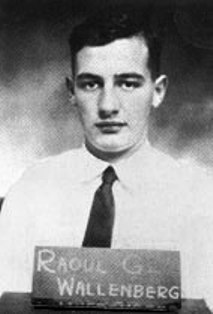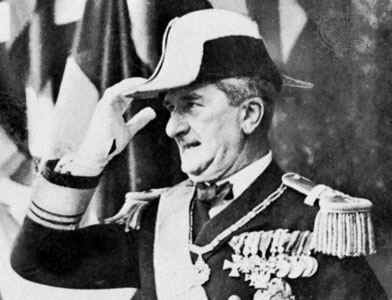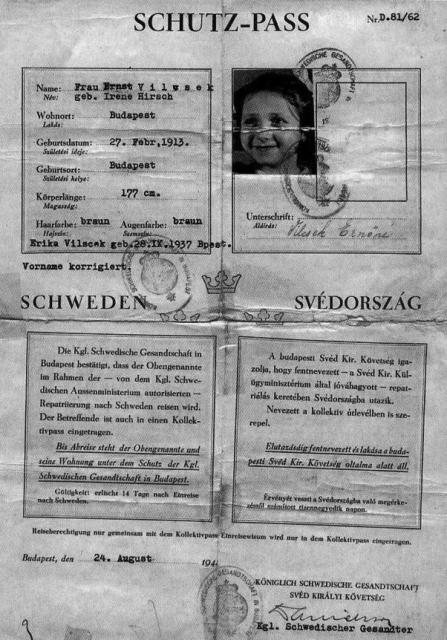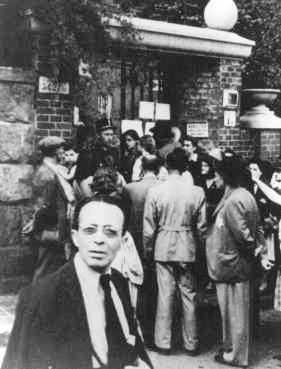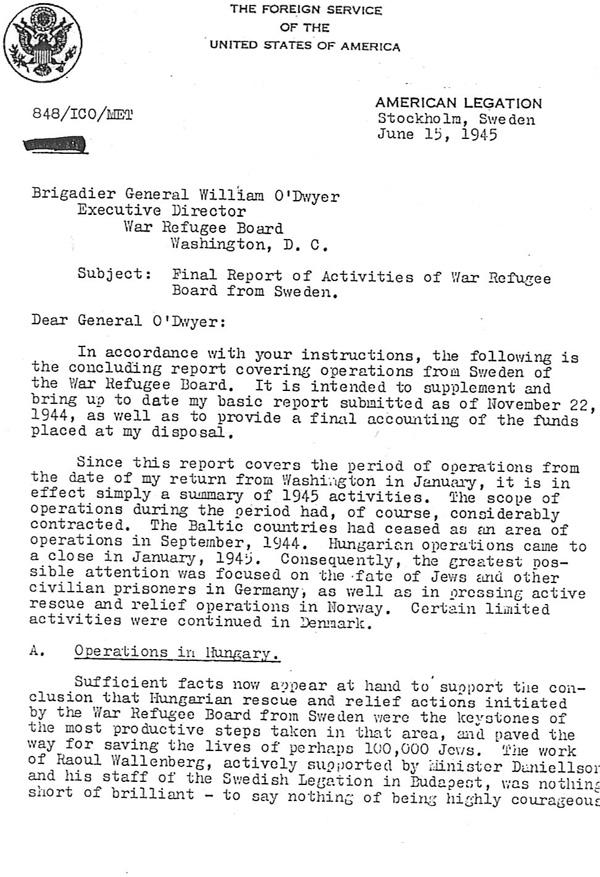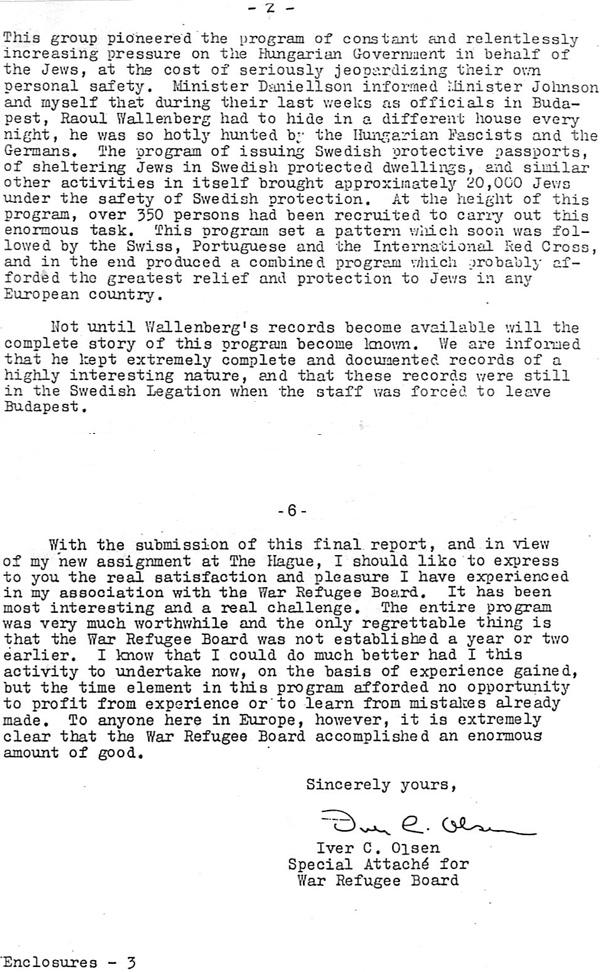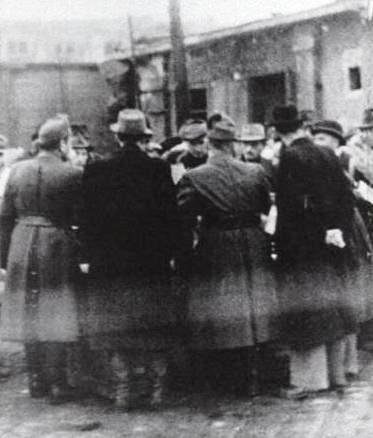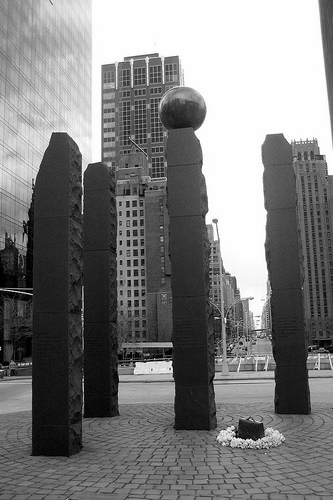Holocaust Education & Archive Research Team |
|
Survivor Stories
Holocaust Survivors Chelmno Survivors Righteous Gentiles Holocaust Recalled
| |||||
Raoul Wallenberg "Righteous Among Nations"
Raoul Wallenberg was born on August 4,1912 in Walpole, Lidingö, Sweden to a member of one of the countries most prominent banking families. His father, Raoul Oscar Wallenberg, was a naval officer and a cousin of Jacob and Marcus Wallenberg, two of Sweden's best-known financiers (often referred to as "the Swedish Rockefellers), and industrialists during the 1920's & 30's
In 1930, Raoul Wallenberg graduated with top grades in Russian and drawing. Upon completing army service in 1931 he then traveled to the USA to study architecture at the University of Michigan in Ann Arbor. Wallenberg devoted most of his time to study and he graduated early, completing his curriculum in under the typical four year time frame.
After graduating from UMICH with top honors and the recipient of a scholastic award bestowed only the individual with the most impressive academic record. Wallenberg wrote his grandfather: "When I now look back upon the last school year, I find I have had a completely wonderful time."
In 1935, he received his bachelor degree of Science in Architecture and returned to Sweden. But the market for architects was small in Sweden, so his grandfather sent him to Cape Town, South Africa, where he practiced at a Swedish firm selling building materials. Shortly after, his grandfather arranged a new job for him at a Dutch banking office located in Haifa.
It was in Palestine he first met Jews that had escaped Hitler's Germany and learned of their plight. He then left Haifa and returned to Sweden in 1936 to resume his interest in European business. Through family connections and associates, Raoul was introduced to Kálmán Lauer, a Hungarian Jew and then director of a Swedish based import and export company specializing in food and delicacies.
The two men became friends and Wallenberg made numerous trips to Hungary, where he visited Lauer's family in Budapest. Over the ensuing years and via constant business related trips throughout Nazi-occupied Europe, Wallenberg quickly learned to navigate the German bureaucratic apparatus. A skill that was to prove invaluable in the years to come.
By 1938 Anti-Semitism was on the rise in Hungary and Wallenberg became increasingly concerned about the plight of the Jewish community. Hungary under the regency of Miklós Horthy passed a series of anti-Jewish measures that restricted their professions, reduced the number of Jews in government jobs, and prohibited intermarriage.
Lauer found it increasingly difficult to travel to Hungary, and Wallenberg became his trusted representative. Wallenberg soon learnt Hungarian, and from 1941 made frequent travels to Budapest Within a year, Wallenberg was a joint owner and the international director of the company.
On 17 April 1943, Horthy visited Hitler at Klessheim Castle to discuss the terms on which Hungary would remain in the war. The Hungarian regent was reproached by the Nazis for a racial policy towards the Jews they believed was much to lenient.
Miklós Horthy then responded: " Having deprived the Jews of nearly every means of getting a living, he could not beat them to death”.
At this Joachim von Ribbentrop emphatically declared that they must either be killed off or sent to concentration camps. So began the destruction of the Jews of Hungary.
By July 1944, with the actions against the Jews in full swing, the Hungarians and the Germans had deported nearly 440,000 Jews from Hungary, almost all of them to the Auschwitz-Birkenau, where the SS killed approximately 320,000 of them upon arrival and deployed the rest at forced labour in Auschwitz and other camps. Nearly 200,000 Jews remained in Budapest; the Hungarian authorities intended to deport them as well in compliance with German requests.
The Germans then started rounding up Jews from the country side, but the Jewish citizens of Budapest knew that their hour of fate was also soon to come. In their desperation they sought help from the embassies of the neutral countries, where provisional passes were issued for Jews with special connections to these countries.
The Swedish legation in Budapest succeeded in negotiating with the Germans that the bearers of these protective passes or "Schutz-Passes" would be treated as Swedish citizens and exempt from wearing the yellow Star of David on their chest.
In the United States, Franklin Delano Roosevelt had established the War Refugee Board in 1944 , an organization whose task was to save European Jews from Nazi persecution. The WRB soon found out that the Swedes were making serious attempts to save Jews in Hungary. Their Stockholm representative summoned a group of prominent Swedish Jews to discuss names of suitable people who could travel to Budapest and initiate a major rescue action.
Among the participants was Raoul Wallenberg's business partner, Kálmán Lauer, who served the group as an expert on Hungary. When the group's first choice; Folke Bernadotte, then chairman of the Swedish Red Cross and a relative of the King Gustav V, was not approved by the Hungarian government, Raoul Wallenberg was suggested as a suitable alternative by Kálmán Lauer.
Wallenberg was described as being just the “right man for the job”, possessing all qualities needed for success in the mission. Lauer also pointed out Wallenberg’s familiarity with Hungary and his remarkable linguistic talent. Iver Olsen, an official representative of the American War Refugee Board appointed by Roosevelt, also believed that Wallenberg was the right choice.
By late June 1944, Wallenberg had been appointed first secretary of the Swedish diplomatic mission in Budapest. His brief was to initiate a rescue action for the Jews. He was very eager to travel to Budapest, but first he wrote a memo to the Swedish Ministry for Foreign Affairs. Wallenberg was determined not to let himself be buried in diplomatic protocol and bureaucracy.
His methods were a serious departure from the conventional and often-protracted methods associated with diplomacy. He used bribes and threats of extortion to achieve his ends. Initially shocked by his efforts, the Swedish diplomats soon rallied to full support when they saw how successful he was at achieving his aims.
One of Wallenberg’s first tasks was to craft some kind of pass or paperwork that would help to protect Jews. His earlier interactions with both German and Hungarian officials had taught him that they had a weakness for fancy, official-looking paperwork that was heavy on symbols, stamps and signatures.
Accordingly, Wallenberg ordered yellow passes with the coat of arms of the Swedish Crown printed in blue and adorned with the proper official stamps and signatures of the Swedish embassy officials.
Officially, the passes weren’t worth the paper on which they were printed. Practically, however, they were effective in protecting their bearers from being forced to wear the humiliating and potentially dangerous yellow patch of the Star of David that marked all Jews within the German sphere of influence.
Agnes Grossinger survivor and bearer of a Swedish Schutz-Pass recalls: They offerred help to my mother and bought her 3 Swiss Schutzpasses, because their whole battalion was under a blanket Shutzpass, and they had access to some more. My mother and I lived in different Swiss Safe houses, until end of Nov. 1944, when we were able to get refuge to the so called "Glass House" on Vadasz utca 29, wich was considered like an annex to the Swiss Embassy located on the Dunnapart, wich by that time housed all the other foreign Embassies. The Glass House gave refuge to about 2000 Jews, mostly young Zionist, who constantly risked their lives, delivering passports, letters news to the people hiding in different safe houses, and living in the ghetto. Through this couriers dressed in "nyillas" arrowhead uniforms, we found out that my father was brought back from the Austrian border to the ghetto, because of his Schutzpass.
Toward the end of 1944 Wallenberg had moved his operations across the Danube from Buda to the Pest district, where the two Jewish ghettoes were located. The minimal law and order that had previously existed were now gone. The Arrow Cross movement, the police and the German armed forces shared power in an uneasy alliance.
Often, Wallenberg relied solely on cunning and fearless, decisive action to shield Jews from Nazi hands. One very inspired action was to use available funds to create a network of houses that flew the Swedish flag, and which were designated as “official” Swedish territory, and which offered Jews a sanctuary in which they could find protection. At their height, these houses sheltered over 15,000 Jews from near certain death at the hands of the Nazis.
Sandor Ardai, one of the drivers working for Wallenberg, recounted what Wallenberg did when he intercepted a trainload of Jews about to leave for Auschwitz:
I believe the Arrow Cross men deliberately aimed over his head, as not one shot hit him, which would have been impossible otherwise. I think this is what they did because they were so impressed by his courage. After Wallenberg had handed over the last of the passports he ordered all those who had one to leave the train and walk to the caravan of cars parked nearby, all marked in Swedish colours.
I don't remember exactly how many, but he saved dozens off that train, and the Germans and Arrow Cross were so dumbfounded they let him get away with it.
During the second week of January 1945, Raoul Wallenberg learned that Eichmann was about to set in motion a total massacre of the Jews living in Budapest's larger ghetto. The only person who could prevent it was General August Schmidthuber, commander of the German troops in Hungary.
Wallenberg's ally Szalay was sent to find Schmidthuber and hand over a note which declared that Raoul Wallenberg would make sure that the general would be held personally responsible for the massacre and that he would be hanged as a war criminal after the war. The massacre was cancelled at the last minute as a result of Raoul Wallenberg's intervention.
Wallenberg and his driver fell into the hands of the Soviet forces that captured Hungary in January of 1945. Wallenberg was arrested and transported to a Soviet prison, where his fate became shrouded in a mystery that persists to this day. He was last seen on January 17th 1945, when Soviet military men escorted him to the headquarters of the Red Army in Debrecen, east of Budapest.
Russian intelligence felt that sheltered behind his rescue mission, Wallenberg was carrying espionage activities for the United States. Since then Wallenberg's whereabouts remain unknown.
Despite the mysterious circumstances surrounding his fate, Wallenberg was twice nominated for a Nobel Peace Prize and honoured throughout the world for his heroic efforts to save the Jews of Hungary. International honours bestowed on Raoul Wallenberg:
Honorary Citizen of Canada
Sources:
The International Raoul Wallenberg Foundation Rosenfeld, Harvey, Raoul Wallenberg: angel of rescue, heroism and torment in the Gulag. Buffalo N.Y. 1982. Holocaust Historical Society Swedish National Archives US National Archives The Holocaust Chronicle Yad Vashem USHMM
Copyright. Carl Evans & Carmelo Lisciotto H.E.A.R.T 2008
|
